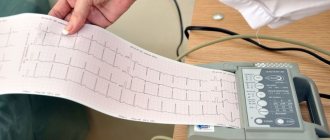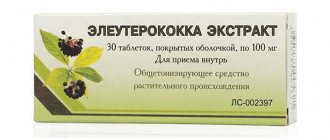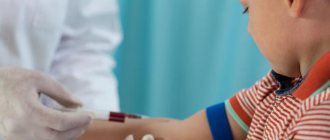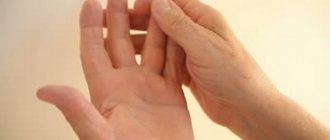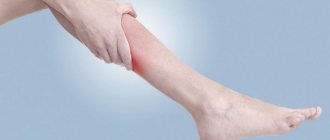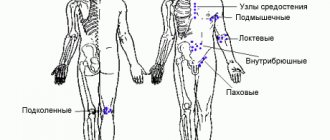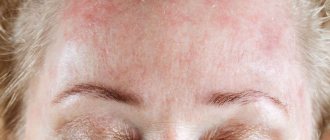Blood pressure 100/60 – normal or pathological
Blood pressure 100/60 is the maximum acceptable lower normal value. For most people, this is the optimal pressure at which a person feels comfortable, does not make any complaints, and remains functional.
However, in some cases, such systolic and diastolic indicators indicate the presence of the disease.
Most often, the tonometer records numbers of 100/60 in slender girls or with orthostatic hypotension. This condition appears in the morning when abruptly getting out of bed, manifests itself as dizziness, flashing spots before the eyes, and threatens loss of balance and injury. Orthostaticity is also impaired in the postoperative period or after taking a number of medications.
Diagnosis and main symptoms
The diagnostic algorithm is simple:
- History taking, physical examination.
- UBC, OAM, blood testing for hormones.
- Tonometry, Holter.
- ECG, EchoCG, EEG.
- MRI.
- Load tests.
- Consultations of narrow specialists.
The list of manipulations can be expanded at the discretion of the doctor. The examination reveals the main symptoms of hypotension:
- weakness;
- headaches and chest pains;
- dyspnea;
- lethargy, apathy;
- digestive disorders;
- tachycardia.
An increase in symptoms with a sharp decrease in pressure indicators threatens a hypotensive crisis requiring emergency assistance.
What does this pressure mean?
What is essential or primary hypotension, namely, tonometer readings of 100/60, is still not clear. If the main role in the drop in pressure belongs to physiological factors, they speak of an adaptive mechanism of the human body. This means that the internal organs and tissues need just this vascular tone; it provides them with optimal nutrition and oxygen supply. In the case of pathology, we are talking about a symptom of a somatic disease.
In children and adolescents
At a young age, blood pressure 100 over 60 is most often a consequence of psycho-emotional overload. In addition, it plays a role:
- acceleration: the lumen of blood vessels does not keep pace with the rapid growth of the heart;
- weak myocardium – “drip heart”;
- autonomic disorders due to long periods of sitting at the computer and other gadgets.
The pathology is discovered accidentally while monitoring blood pressure, which requires a full clinical and laboratory examination.
In adult men and women
Such blood pressure numbers are considered adaptive prehypotension, with which people live for many years without a decrease in quality of life or loss of ability to work (this also applies to physiological menstruation). In addition, among athletes, blood pressure figures of 100/60 are the result of training, and among residents of high mountains, it is an innate mechanism of adaptation to a lack of oxygen.
In older people
Hypotension 100/60 after 55, when hormonal changes in the body begin in full swing, indicates the development of hypotension. It is extremely rare, since sclerotic vessels a priori require high pressure. Hypotension at this age can lead to hearing loss and vision impairment due to insufficient blood supply to the temporal lobes of the brain. The combination of hypotension and tachycardia is extremely dangerous; it precedes a heart attack or stroke and requires urgent hospitalization.
Symptoms requiring medical attention
There are quite a lot of manifestations that oblige the patient to see a doctor.
Among them:
- Severe headache or constant cephalalgia (headache) of an unrefined nature.
- Dizziness of unknown origin with regular relapses.
- Nausea.
- Vomiting without signs of relief after the next process. It has a recurrent, repeated nature.
- Fainting states of a regular nature.
- Darkening of the eyes with a sudden change in body position or rapid movements. Indicates a sharp drop in blood pressure as a result of minor physical activity. Is it dangerous.
- Heart rhythm disturbances such as tachycardia, that is, an increase in the number of beats per minute or bradycardia, the reverse process
- Pain behind the sternum or in the back on any side of varying nature and intensity.
- Dyspnea. Increase in the number of respiratory movements per minute. Considered an unfavorable sign.
- Mental status disorders (depressive and anxiety disorders).
In all cases, you should consult a doctor. If necessary, you should call an ambulance to resolve the issue of emergency correction or transportation to a cardiology hospital.
Reasons for the maximum permissible blood pressure norm
Pressure 100/60 may be secondary in nature when its drop is due to internal pathology.
With normal heart rate
Typically, a normal pulse corresponds to physiological hypotension, which is characteristic of:
- asthenics;
- inhabitants of the highlands, polar regions, tropics;
- athletes.
There is no discomfort felt.
If the pulse is 90-100 beats/minute
Tachycardia due to hypotension is the result of a decrease in circulating blood volume, which occurs when:
- dehydration of various origins;
- bleeding of various etiologies with large blood loss;
- burns;
- liver and kidney diseases;
- anaphylactic shock;
- hypoglycemia;
- panic attack.
A rapid pulse is a compensation for normal oxygen supply to vital organs or a reaction to myocardial conduction disturbances.
With bradycardia, pulse below 50 beats/minute
Low pulse with prehypotension is a common phenomenon and occurs:
- if a person is hypothermic;
- in any trimester of pregnancy;
- in athletes;
- in the elderly;
- with pathology of the cardiovascular system (cardiosclerosis, ischemic disease, weakness of the sinus node);
- poisoning;
- infections;
- hypothyroidism;
- anemia.
Another cause of bradycardia may be a hereditary predisposition or allergy.
Welcome to the website of the State Health Institution “City Clinic No. 5”!
Details Published 08/19/2020 07:15 Why blood pressure drops: seven possible causes of hypotension
Low blood pressure is often a symptom of cardiac failure, when the heart pumps blood worse and vascular tone is weakened
Is it normal for it to increase with age? Experts talk about the real causes of blood pressure problems.
Hypotension (scientifically called arterial hypotension) is a condition when, when measuring pressure, the tonometer shows numbers below 105/70 mm Hg. Art. As a rule, it is accompanied by weakness, dizziness, headaches, and nausea.
1. There are people who have LOW BLOOD PRESSURE as an innate feature of the autonomic nervous system. These are people of the so-called asthenic type (as a rule, they have a fragile physique, light or brown hair, pale skin), they make up about 7% of the population. They are not distinguished by great endurance and performance, but they live quite active lives and do not feel
your low blood pressure. But an increase in pressure even to the normal limits (120/80) is tolerated very poorly.
2. Low blood pressure is often a symptom of cardiac failure, when the heart pumps blood worse and vascular tone is weakened. Often this condition occurs against the background of inflammatory heart diseases - endo- and myocarditis, which in half of the cases develop as complications after tonsillitis and flu. Hypotension also accompanies diseases associated with impaired nervous regulation of the heart (various arrhythmias and blockades). All these disorders are clearly visible on the ECG.
3. Vegetative-vascular dystonia of the hypotonic type (scientifically called neuro-circulatory dystonia). Because there are two types of reactions in this condition: sympathoadrenal and parasympathetic
Psychiatrists joke that a person’s soul is not in the heart, but in the kidneys - after all, stress hormones are produced in the adrenal glands:
- Adrenaline (“aggressive hormone”) excites, causes a feeling of heat, a rush of blood to the head, increased blood pressure, sweating, aggressive irritability, dysphoria (an irritable-sullen mood).
- Acetylcholine (“weakness hormone”), on the contrary, lowers blood pressure, causes cold sweats, chills, irritable weakness, a feeling of melancholy and weakness.
— And some people have mixed attacks, when acetylcholine and adrenaline reactions alternate. This gives rise to pressure surges, a person literally throws himself into the heat, then into the cold, says psychiatrist, psychotherapist, psychosomatics specialist Anatoly German.
4.LOCKED PRESSURE can be a side effect of some medications. The pressure can be “dropped” by:
- heart medications (nitroglycerin preparations, beta-blockers),
- large doses of antibiotics,
- antispasmodics and painkillers,
- large doses of “simple” sedatives (Corvalol, Valocordin, tinctures of peony and motherwort). Valerian has a milder effect.
5. A sudden drop in pressure occurs during an exacerbation of a stomach ulcer or an attack of pancreatitis. Usually this condition, in addition to pain in the stomach, is accompanied by general weakness and cold sweat. This is symptomatic hypotension and will go away once you heal your stomach.
Also, pressure always drops with any bleeding: nasal bleeding, hemorrhoidal bleeding.
6. Hypotension almost always accompanies some types of depression:
- asthenic - depression of exhaustion. With it, a feeling of fatigue prevails, outwardly there is a hint of exhaustion, a person can even seriously lose weight.
- apathetic. She is characterized by complete indifference to her surroundings, she doesn’t want anything, “nothing pleases, nothing hurts...”
- anhedonic. This is a loss of joy. Saturation with emotions, a feeling of mental impasse. Depression of great emperors and successful businessmen.
7. In completely healthy people, pressure can drop sharply after procedures that cause vasodilation - Russian baths, saunas, thermal baths, body wraps. So everyone, and especially older people, need to monitor their blood pressure very carefully if you go to the sauna. You should not stay in the steam room for more than 5-7 minutes at a time. Even if you are a fan of bath procedures, you need to take breaks and under no circumstances drink alcohol either before or after the bath.
What to do
Physiological prehypotension does not require any special treatment. The criterion is the general condition of a person, his comfortable state of health. Pathological – requires identifying the root cause and eliminating it. Tonometer readings of 100/60 in this case may be the first and only harbinger of tuberculosis, stomach ulcers, and viral hepatitis. Therefore, when:
- vomiting;
- convulsions;
- arrhythmias;
- confused consciousness;
- shortness of breath;
- chest discomfort - calling an ambulance is required.
Otherwise, prehypotension behaves very calmly and does not require emergency measures.
At home
What to do if blood pressure has crossed the maximum permissible line of 100 to 60, but there has been no sharp deterioration in health? At home, you can use the following algorithm of actions:
- drink a cup of natural (insoluble) coffee, strong tea;
- take tincture of Eleutherococcus, Schisandra, Leuzea and other natural adaptogens;
- in order to prevent orthostatic disorders, do not get up from a chair abruptly;
- ventilate the room you are in;
- do physical exercises to increase the tone of blood vessels and muscles (stand on your toes several times, clench and unclench your palms), in the future - swimming, yoga, race walking;
- ensure normal sleep;
- balance the diet: lots of fruits and vegetables, seasonings, herbs, salt - up to 10 g/day;
- at least 2.5 liters of water daily;
- exclude alcohol, nicotine, drugs.
Blood pressure is your lifestyle, and only you can make it your ally.
Medicines
If home remedies do not help raise blood pressure to the maximum permissible norm, use the following drugs:
| Name | Properties |
| Citramon from the caffeine-containing group | Relieves headaches |
| Cerebrolysin, Nootropin (read: what are nootropics) | Increases vascular tone, especially the brain, improves the emotional sphere |
| Tanakan – thrombolytic of plant origin | Improves blood viscosity, normalizes blood circulation |
| Saparal – neurotonic | Prevents overwork, relieves depression, asthenia, not taken at night |
All drugs have many contraindications and side effects, so they are not used without a doctor’s prescription.
Treatment methods
If the patient has low blood pressure, a headache, weakness and dizziness, it is necessary to restore normal blood flow through the vessels as quickly as possible. Then it is important to consult a doctor to select medications for a course of treatment. The regimen is prescribed individually, depending on general health, blood pressure readings, accurate diagnosis and concomitant diseases.
First aid
If your blood pressure drops, your head hurts, or your health suddenly deteriorates, this indicates an insufficient supply of oxygen to the brain cells. It is important to restore your blood pressure before seeing a doctor. To do this, doctors recommend using several methods:
- take caffeine - this substance has a vasoconstrictor effect and is found in coffee and strong tea;
- provide access to oxygen, ventilate the room or go outside;
- take a sitting position and lower your head down - this normalizes blood flow to the brain;
- Unbutton the collar, loosen the cuffs on the sleeves.
After these manipulations, the pressure will return to normal, but the attack may recur. It is also important to notice its onset in time. If your health has sharply deteriorated, your head hurts, dark circles appear before your eyes, you must immediately inform others about the problem and ask for help.
Drug treatment
For the comprehensive treatment of headaches due to hypotension, a course of medications is prescribed. Some of them are designed to quickly narrow blood vessels and restore blood flow and are used to relieve attacks. The doctor will also recommend medications for a course of treatment. The regimen may include the following drugs:
- drugs that stimulate an increase in blood pressure, including those based on caffeine (Pyramein, Caffetamine);
- medications to improve blood supply to brain tissue and to prevent stroke (Glycine, Tanakan);
- herbal preparations for raising blood pressure and normalizing the functioning of the nervous system (tincture of Eleutherococcus).
The effectiveness of treatment must be constantly monitored by measuring blood pressure. To do this, it is enough to use a tonometer once every few days. Monitoring indicators too frequently leads to disruption of the nervous system and neuroses, which can provoke additional attacks of hypotension. Doctors at the Clinical Institute of the Brain will select a suitable treatment regimen, which will include only useful and necessary drugs, without unnecessary prescriptions and procedures. However, it is important to follow all instructions and take medications as scheduled.
BP 100 over 60 during pregnancy
Blood pressure may be a physiological condition that has no effect on pregnancy (an asthenic young girl), but the same blood pressure can warn of problems with blood flow and fetal hypoxia, which can lead to miscarriage. Causes may be dehydration, infections, stress.
You should tell your doctor if you feel unwell. He will recommend measures that can normalize the situation: from eating strawberries to compression stockings. At home, they practice limiting physical activity, carefully getting out of bed (injuries), and sleeping on high pillows.
Often in pregnant women with a predominance of the parasympathetic system, low blood pressure with bradycardia leads to severe complications:
- dizziness;
- presyncope, fainting;
- collapse.
Therefore, preservation is indicated for pregnant women with blood pressure 100/60 so that proper care can be provided in a timely manner.
Lower and upper blood pressure
In a healthy person, the heart muscle contracts 60 to 80 times per minute at rest. With each contraction, the heart pumps another portion of blood into the arteries. Accordingly, the maximum blood pressure on the walls of blood vessels is recorded at the moment of contraction of the heart muscle. Between contractions, the heart muscle relaxes. At the time of such rest, blood pressure is at its lowest.
The highest reading is called systolic or upper pressure. The name comes from the word “systole” - the stage of contraction. The lowest pressure reading is called diastolic (from the word “diastole” - the stage of relaxation). Systole and diastole are stages of the normal cardiac cycle.
Pressure readings are traditionally recorded in millimeters of mercury. When measuring, the upper pressure indicator is always indicated first, and the lower pressure indicator second.
Correction of indicators and first aid
To increase the pressure, you must follow the following algorithm:
- Call a team of medical workers.
- Lie on a horizontal surface with the leg end raised or lay the victim down in this way.
- Open a window or direct a fan to provide fresh air.
- Drink sweet warm tea or give the victim something to drink. You can add 10 drops of tincture of eleutherococcus, ginseng or Rhodiola rosea.
- Rub your whiskey with lemon essential oil.
Diagnostic measures
When contacting specialists with a problem of low blood pressure (for example, 100–106 to 60–66), patients are interested in the question of whether this is normal, and if not, how to improve the readings. The doctor must ask the patient about the following points:
- When were such pressure indicators first noticed?
- Associated symptoms.
- What is the patient’s “working” pressure?
- Do the patient and his relatives have any diseases of the cardiovascular system?
- The presence of pathologies of other systems.
- Does the person take any medications, etc.
Hypotension can cause fainting
Blood pressure must be measured several times at intervals of 5–10 minutes. If necessary, daily monitoring of blood pressure with monitoring of pulse and other indicators of heart function is prescribed. Additional methods include ECG, echocardiography, electro- and rheoencephalography, and examination by an ophthalmologist.
